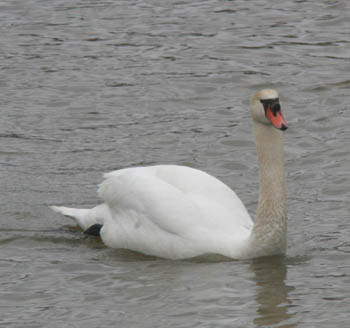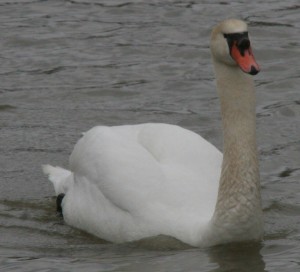Guns for SHTF
There are a lot of articles regarding the 10 must have Guns for SHTF. People that push ownership of many different guns are, in my opinion, not realistic. For one, unless you like collecting firearms, thinking you need a plethora of guns to handle normal life or SHTF situations is expensive and overkill. Second, in a SHTF situation, if you need to move / bug-out you need to carry light and enough supplies and weapons are only a piece – what to do with the ones left behind??? Third, supplying enough ammo and spare parts for all those guns would be too expensive – costs that might be better used for life maintaining supplies such as food, medicines, shelter, etc. What is really needed are firearms that will support and protect you, your family and possessions, something I refer to as “necessary” firearms.
Firearms, in my mind, can be broken into three simple categories:
Rifles
Everything from a .22 caliber up to monster killing 50 caliber. Kill everything from vermin to… monsters. Shoot the squirrel 50 feet away for a quick meal or 500 yards for the much needed deer to feed your family. You can choose everything from a single shot (traditional perfection), a lever action (good gun with good second shot follow-up), bolt action (slower second shot follow-up but many say most accurate) or semiauto (fast second shot follow-up without moving the rifle off shoulder – AR platforms, AK platforms as well as traditional hunting platforms). My favorite here is the semiauto gun.
Shotguns
The “everything” in one gun. Kill birds on the wing, hunt big game and stop intruders in their tracks. If you need a long range arm – shotguns are not them. Single shot shotguns are inexpensive but it’s 1 shot then reload. Pump shotguns are easier to maintain than semiautomatics and like semiauto’s will carry multiple rounds (typically 5 shells).
Pistols
The “personal” arm. Carried at your side. Used to rid your house of vermin, quick protection from a bear or draw down on a bad guy. A big consideration is whether you want a semi-auto (more work to maintain) or a revolver – less trouble to keep clean and operational (double action is better). If the pistol is your protection arm, go with the semi, the follow-up shots are fast and loading a second magazine is quick. Personally, I lean toward the revolver.
Now, Pick a Bullet:,
Each person needs to choose a firearm based on their specific needs, their abilities, available funds, job, etc. A big part of that is bullet. I would not suggest a .44 mag for my 5’5” daughter – a .380ACP would be better. What I believe, after determining gun type (pistol, rifle, shotgun), to be important is to choose a “common caliber” gun you can easily handle. What do I mean? In SHTF situations people with exotic caliber firearms, such as a .454 Casull pistol, may be able to kill zombies but may not have enough ammo to protect themselves over the long term. Run out of ammo such as a .454 and only a few other people may have extra. Run out of common caliber ammo and there will be several thousand other people who could have spare. Additionally, building a stock pile is easier and cheaper if you stay with common calibers. Just what are common calibers?
According to the NRA – the most common pistol calibers are:
1 – .22 Long Rifle – all around caliber for pistol & rifle – Really for small game. You may just piss off an intruder
2 – .38 Special/.357 Magnum – there are a few rifles that chamber this round
3 – 9 mm Parabellum – there are rifles that chamber this round
4 – .44 Special/.44 Magnum – Bear killers – there are rifles that also chamber this round
5 – .45 ACP – stop the Moros in their tracks (figure that one out) – there are rifles that also chamber this round
The most common centerfire rifle calibers are:
1 – .223 Remington/5.56mm NATO – AR round – light for deer but will do the job if accurate
2 – .308 Winchester/7.62x51mm NATO – great all around hunting round. Several rifles will take both sizes
3 – .30-‘06 Springfield – fantastic all around hunting round. Anything on the continent can be taken.
4 – .30-30 Winchester – 10’s of thousands of rifles out there. Almost all are lever action.
5 – .270 Winchester
6 – .243 Winchester
7 – .300 Winchester Magnum
8 – 7mm Remington Magnum
9 – 7.62×39 – AK round – can be used on medium sized game.
10 – .300 Winchester Short Magnum
11 – .22-250 Remington – I own one. Light weight bullet but long range if you can handle it.
Shotguns are easy, stay with 12 or 20 gauge – enough said.
The Gun:
Should you buy multiple guns? The answer could be maybe or not necessary. What do you need a weapon for? Guns for SHTF should be chosen well. A homeowner in a rural area will have much different needs than an urban dweller. First, if lucky, suburban & rural people may be able to stay put. Their stockpile of whatever is safer. Additionally, the suburban/rural person has the ability to hunt for food as well as protect themselves from intruders. If an urban dweller is in a real SHTF scenario, bugout may be the only hope, while an urban dweller’s food hunting may be squirrels, pigeons and rats (the 2 legged kind here are the most dangerous).
Urban Dweller:
I hate to say this but in an urban area you probably need firepower and a close quarter arm more for protection than anything else. Semiauto pistols or (grab them while you can) an AR / AK rifle with a short barrel and multiple magazines probably are the best choice.
Do you need both a pistol and a rifle, probably not? Guns for SHTF are specific. I would opt for one light weight small arm and stock parts that are prone to ware out or possibly brake – based on the gun you buy, your gunsmith can instruct you on what parts if any should be stocked. If it is decided two guns are needed (desired), seriously think about staying with one caliber. Look into a 9 mm semiauto pistol and a semiauto rifle chambered in same. This way you only need to focus on one type of bullet. The 9 mm is extremely common, not overly heavy and you could actually use the rifle for medium sized game.
Suburban & Rural
This is where I truly believe a few guns could be appropriate (fun) especially if you will not “bug-out” – but please keep the “collection” limited, remember for Guns for SHTF you will need to learn how to maintain each as well as stock extra parts and ammo. Pick a workable pistol from the list of common calibers above. For a rifle, a small caliber .22 will be a workhorse gun for small game and vermin (Seriously consider a Ruger 10-22, they are fast, accurate and there are thousands out there. They also come in a breakdown model!!). 1 or 2 larger caliber guns (a shotgun would be one of those) for food and heavy protection. The shotgun is able to handle birdshot, buckshot and slugs (I would choose a 12 gauge pump – Remington 870 or a Mossberg 500. There are thousands out there for cannibalizing parts if necessary). Get both a rifle barrel as well as a smooth barrel for the shotgun. The 2nd long gun should be for distance protection and large game hunting. To me the ultimate here is the .308 Winchester/7.62x51mm NATO. If you are a good marksman, you could get away with the .223 Remington/5.56mm NATO. I would choose an AR platform for either caliber.
If you decide that you want to own a gun or multiple guns for SHTF you should learn about them, learn how to handle them and learn how to maintain them. In that light join a gun club and visit local gun shows.
 Growing up on Long Island, NY, I had plenty of opportunities to view these birds. They can be very aggressive – I have watched Mute Swans chase dogs, geese and people not only from their nests but just because their “space” was invaded. These are easy birds to observe since they are use to people – yet they need their space. Even if you are motionless a bird that approaches should be treated with a lot of respect.
Growing up on Long Island, NY, I had plenty of opportunities to view these birds. They can be very aggressive – I have watched Mute Swans chase dogs, geese and people not only from their nests but just because their “space” was invaded. These are easy birds to observe since they are use to people – yet they need their space. Even if you are motionless a bird that approaches should be treated with a lot of respect. The Mute Swan is reported to mate for life. However, changing of mates does occur infrequently, and swans will remate if their partner dies. If a male loses his mate and pairs with a young female, she joins him on his territory. If he mates with an older female, they go to hers. If a female loses her mate, she remates quickly and usually chooses a younger male. (3)
The Mute Swan is reported to mate for life. However, changing of mates does occur infrequently, and swans will remate if their partner dies. If a male loses his mate and pairs with a young female, she joins him on his territory. If he mates with an older female, they go to hers. If a female loses her mate, she remates quickly and usually chooses a younger male. (3)